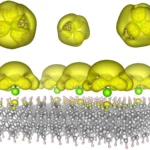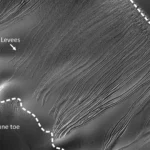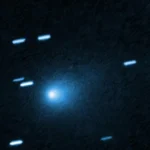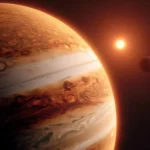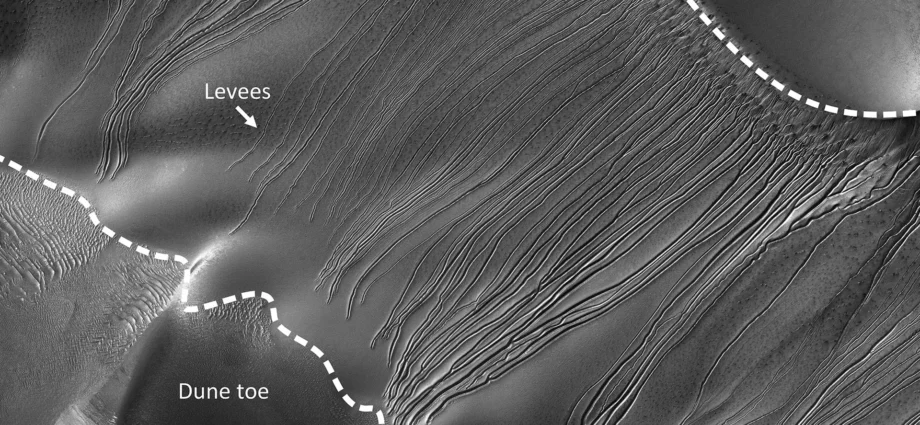Could Mars have once supported life? Scientists still don’t have proof. Yet some of the planet’s strange surface features might seem to hint at it. Earth scientist Dr. Lonneke Roelofs of Utrecht University set out to study the origin of mysterious gullies carved into Martian dunes. In her laboratory experiments, she discovered that blocks of frozen carbon dioxide (CO2 ice) can actually dig these channels on their own. “It felt like I was watching the sandworms in the film Dune,” she said. Her research appears in Geophysical Research Letters.
For years, scientists suspected CO2 ice might be responsible for the odd formations, but no one had been able to show it directly. Roelofs succeeded by creating gullies in the lab using CO2 ice blocks, replicating a natural process that doesn’t occur on Earth and had never before been seen in action.
Sublimation
During the Martian winter, when temperatures plunge to around minus 120 degrees Celsius, ice accumulates on the dunes. As spring approaches, the sun warms the slopes and large ice blocks — sometimes a meter long — break loose. Because Mars has a thin atmosphere and a sharp temperature difference between warm sand and the ice, the underside of these blocks instantly turns to gas in a process known as sublimation. Since gas takes up far more space than solid ice, the pressure builds rapidly, making the ice appear to “explode.”
“In our simulation, I saw how this high gas pressure blasts away the sand around the block in all directions,” says Roelofs. As a result, the block digs itself into the slope and becomes trapped in a hollow surrounded by small ridges of settled sand. “However, the sublimation process continues, and so the sand keeps on being blasted in all directions.” As the ice keeps vaporizing, it gradually slides downhill, carving a long, deep trench with ridges on either side. These artificial gullies match the ones seen on Mars almost exactly.
Landscape formation
Roelofs studies the geological forces that sculpt Mars’ surface. In earlier work, she showed that sublimating CO2 ice can trigger debris flows that cut deep channels along crater walls. “But the gullies from this research looked different,” she explains. “Therefore, a different process was behind this, but which? That is what I set out to discover.”
Mars chamber
Together with master student Simone Visschers, she traveled to the English city of Milton Keynes to solve the mystery behind these unusual sand gullies. The Open University has a ‘Mars chamber’: a facility for simulating Martian conditions. Financial support from the British Society of Geomorphology made the visit possible. “We tried out various things by simulating a dune slope at different angles of steepness. We let a block of CO2 ice fall from the top of the slope and observed what happened,” states the researcher. “After finding the right slope, we finally saw results. The CO2 ice block began to dig into the slope and move downwards just like a burrowing mole or the sandworms from Dune. It looked very strange!”
From ice to gullies
But how exactly do these blocks of ice form? “The CO2 ice blocks form on the desert dunes halfway down the southern hemisphere of Mars. During the winter, a layer of CO2 ice forms over the entire surface of the dune field, sometimes up to a thickness of 70 cm! In spring, this ice begins to warm up and sublimate. The last remnants of this ice are located on the shaded side of the dune tops, and that is where the blocks break off from once the temperature is high enough. Once the blocks reach the bottom of the slope and stop moving, the ice continues to sublimate until all the CO2 has evaporated. What remains is a hollow in the sand at the bottom of the dune.”
Why Mars?
Why does this planet fascinate people so much? “Mars is our nearest neighbour. It is the only rocky planet close to the ‘green zone’ of our solar system. This zone lies exactly far enough from the Sun to make the presence of liquid water possible, which is a prerequisite for life. Questions about the origin of life, and possible extra-terrestrial life, could therefore be solved here,” says Roelofs. “Also, conducting research into the formation of landscape structures of other planets is a way of stepping outside the frameworks used to think about the Earth. This allows you to pose slightly different questions, which in turn can deliver new insights for processes here on our planet.”
Space Exploration; NASA; Extrasolar Planets; Space Telescopes; Space Missions; Sun; Solar System; Space Station
